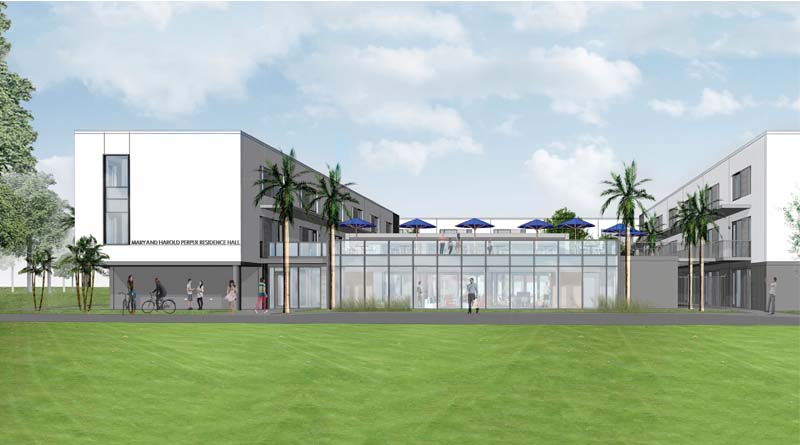Lynn University Residence Hall earns LEED Silver certification
By Aziza Jackson
BOCA RATON, Fla. — Lynn University’s loft-style campus apartments recently achieved LEED Silver certification from the U.S. Green Building Council (USGBC).
Lynn University’s Mary and Harold Perper Residence Hall recently received LEED Silver certification for its accomplishments in energy consumption, water efficiency, and other green initiatives. Lynn University’s student body included 2,232 undergrads, 791 graduate and 70 doctoral students as of fall 2018. The 60,000-square-foot development is part of Lynn University’s campus masterplan.
Designed by Gensler, the residence hall opened in August 2017 and includes loft-style apartments for 170 upperclassmen students, as well as a courtyard, two patios, a fire pit and grills. A community space has a TV lounge, collaboration room and full kitchen where students can relax, study and socialize together.
USGBC awards certifications based on points applicants earn across several categories. Perper Residence Hall earned LEED Silver for:
- Water efficiency: The campus taps into an IRIS Loop, a non-potable water source, which allows it to use reclaimed (recycled) water for the irrigation system. Additionally, water-efficient faucets, toilets and showerheads utilize 40.34 percent less water than similar buildings.
- Sustainable site: Forty-four percent of the site is dedicated to vegetated open space, an exemplary accomplishment, according to LEED rating systems. It is also made up of drought-tolerant native plants, including sabal palms, a thatch palm and a live oak tree in the courtyard.
- Energy and atmosphere: The building uses 33.77 percent less energy than a code-compliant baseline.
- Indoor environmental quality: Low-emitting paints, adhesives and flooring products provide enhanced indoor air quality. All installed carpet is certified by the CRI Green Label Plus program. Additionally, over 90 percent of indoor spaces have a nature view.
- Materials and resources: Over 20 percent of project materials are composed of recycled content, and over 75 percent of construction waste was recycled. In addition, more than 50 percent of the structure’s wood was harvested from a responsibly managed forest.

